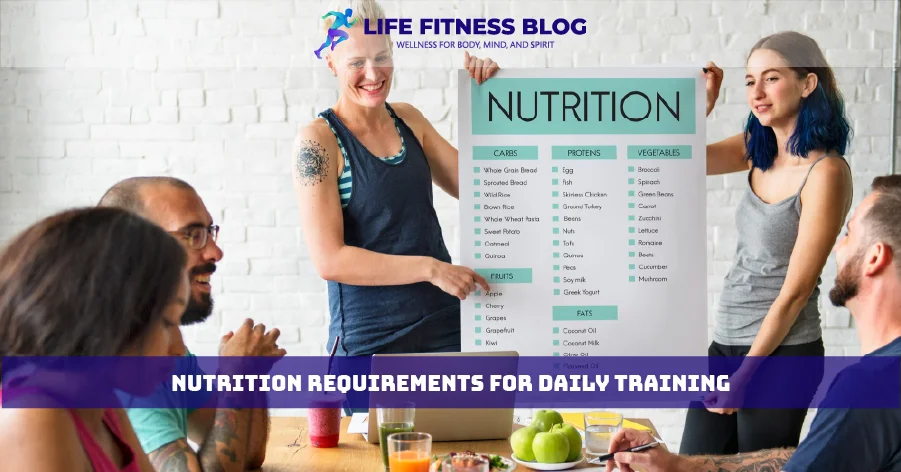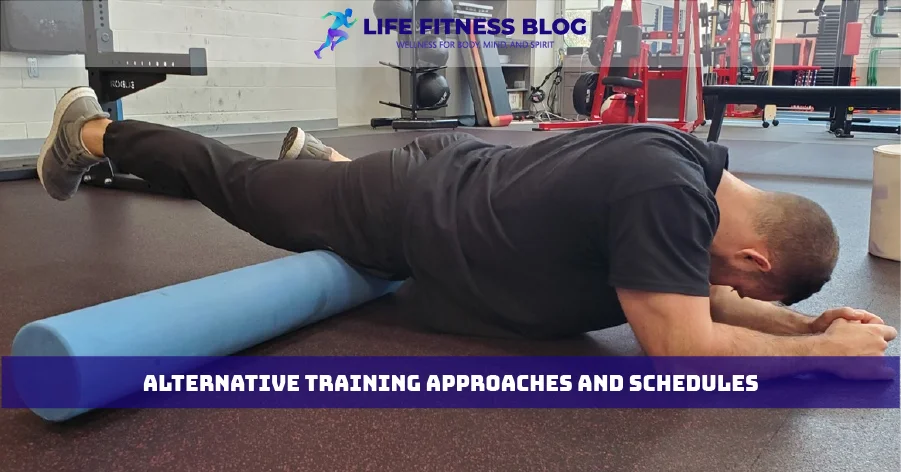Starting a full-body workout routine can boost your fitness. But, can you do these workouts every day? The answer depends on understanding the benefits and risks. This guide will help you make smart choices about your workout schedule and reach your fitness goals.
Full-body workouts are popular because they work for many muscle groups at once. They can improve strength, body shape, and overall fitness. Yet, how often you can do these workouts matters. Your body needs time to recover and get better. We’ll look at the basics, expert views, and practical tips to see if daily full-body workouts are right for you.
Table of Contents
Understanding Full-Body Workouts: Benefits and Fundamentals
Full-body workouts are popular for their strength training benefits. They help with muscle growth and fat loss. These workouts target many major muscle groups at once, offering a balanced way to improve physical fitness.
Key Muscle Groups Targeted
A full-body workout focuses on several key muscle groups:
- Legs (quadriceps, hamstrings, and calves)
- Chest and shoulders
- Back and core
- Arms (biceps and triceps)
Compound vs Isolation Exercises
Full-body workouts use compound exercises. These exercises, like squats and bench presses, work many muscles at once. They are great for building strength and muscle.
Isolation exercises, like bicep curls, target specific muscles. They help fix muscle imbalances or weaknesses.
Energy Systems Involved
Full-body workouts use both aerobic and anaerobic energy systems. Compound exercises, which work for big muscle groups, use the anaerobic system. This system gives a quick burst of power and strength.
Isolation exercises, which focus on smaller muscles, use the aerobic system. This system helps improve endurance and muscle endurance.
Can You Do Full-Body Workouts Everyday: Expert Analysis
Fitness experts have different views on daily full-body workouts. Some think it’s effective, while others warn of risks.
Dr. Emma Roussel, a sports science researcher at the University of California, says daily full-body training can work for some. “It’s all about finding the right balance,” she notes. “You need to watch your training volume, intensity, and rest.”
“With proper programming and enough rest, some athletes can do well with daily full-body workouts. But it’s a fine line to avoid overtraining and injury.”
Certified personal trainer Alex Gonzalez has concerns. “Daily full-body training might be okay for top athletes, but it’s risky for regular gym-goers,” he warns. “They might get overtrained, develop muscle imbalances, or burn out.”
Gonzalez recommends doing full-body workouts 2-3 times a week. “This allows for enough rest and recovery,” he says. “It’s usually the best mix for most people.”
| Expert Opinion | Perspective on Daily Full-Body Workouts |
|---|---|
| Dr. Emma Roussel | Can be sustainable with proper programming and recovery |
| Alex Gonzalez | Cautions against the risks for average gym-goers |
In conclusion, experts still debate daily full-body workouts. While it might suit some, most should stick to 2-3 full-body sessions a week. This ensures they recover well and make steady progress.

The Science Behind Muscle Recovery and Growth
Learning about muscle growth and recovery is key to a great workout routine. The mix of protein synthesis and hormonal response is crucial. It helps build strong, lean muscles that can handle daily workouts.
Protein Synthesis and Recovery Windows
Muscle growth mainly comes from protein synthesis. After a tough workout, your muscles start making more proteins. This lasts for hours, making it a critical time for muscle repair and recovery.
Getting enough protein, especially in the first 24-48 hours after working out, is important. It helps your muscles grow and recover well.
Hormonal Response to Daily Training
Hormones are important for muscle growth and recovery. Hard workouts can make your body release hormones like testosterone and growth hormone. These hormones help your muscles grow and recover.
But, working out every day without rest can upset your hormone balance. This might slow down muscle growth and even cause overtraining.
Knowing how to balance muscle growth and recovery is vital for a good workout plan. By focusing on protein synthesis and managing hormones, you can achieve lasting muscle gains, even with daily workouts.
Signs Your Body Needs Rest Between Workouts
Full-body workouts are great, but they can lead to overtraining if you don’t rest enough. Your body gives you signs when it’s time to take a break. Listening to these signs helps you avoid overtraining and keeps your fitness journey on track.
Feeling tired all the time, even after sleeping well or taking a rest day, is a big sign. It means your muscles and nervous system need more time to recover. If you notice your strength or endurance dropping, that’s another warning sign.
- Persistent fatigue, even after rest
- Decreased performance in the gym
- Increased susceptibility to injuries
- Mood changes and irritability
- Disrupted sleep patterns
Also, if you’re getting hurt more easily, your body is telling you to slow down. Overworking without enough rest makes your muscles, tendons, and joints weak. This makes them more likely to get injured.
It’s important to listen to your body and adjust your workout plan. By focusing on rest and recovery, you can avoid overtraining risks. This way, you can keep making progress towards your fitness goals.
Designing an Effective Full-Body Training Split
Creating a full-body workout routine needs careful planning to reach your fitness goals. Understanding the key parts of a good training split helps you make a plan that works. This plan should help you see steady progress and reach your desired results.
Workout Volume Considerations
Finding the right balance between how much you train and how much you rest is key. Aim for 10-20 working sets per workout, covering the main muscle groups. This amount is enough to challenge you without causing too much fatigue or overtraining.
Exercise Selection Strategy
Picking the right exercises is vital for a balanced full-body routine. Focus on compound movements like squats, deadlifts, pullups, and overhead presses. These exercises work many muscles at once. Add targeted isolation exercises to focus on any muscles that need extra work.
Progressive Overload Methods
- Keep increasing the weight or resistance to challenge your muscles and keep making progress.
- Slowly add more reps or sets to your workouts, letting your body get used to the extra work.
- Try periodization by switching between heavier and lighter training phases. This helps with muscle growth and strength.
By thinking about these points, you can create a full-body workout routine that fits your fitness plan. Remember, sticking to it and being patient is crucial for getting the most out of a full-body workout program.
Nutrition Requirements for Daily Training
Full-body workouts every day need a special diet to help with muscle growth and fat loss. You need the right food to power your workouts and recover well. Here are some key things to think about.
Increased Caloric Needs
Full-body workouts daily burn a lot of energy. You’ll need to eat more, about 300-500 extra calories a day. This depends on how active you are and your metabolism.
Protein Intake for Muscle Repair
Protein is key for fixing muscles after hard workouts. Eat 1.6-2.2 grams of protein for every kilogram of your weight. This helps with muscle growth and recovery.
Importance of Hydration
Drinking enough water is vital for frequent workouts. Drink water all day and use electrolyte drinks to replace lost minerals.
Micronutrient Needs
You also need lots of vitamins and minerals from food. Eat a variety of fruits, veggies, whole grains, and lean proteins. This keeps your body healthy and helps with fat loss.
| Nutrient | Importance for Daily Training | Good Food Sources |
|---|---|---|
| Vitamin C | Supports immune function and collagen production for tissue repair | Citrus fruits, bell peppers, broccoli, strawberries |
| Magnesium | Aids in muscle and nerve function, energy production, and bone health | Leafy greens, nuts, seeds, whole grains |
| Iron | Crucial for oxygen transport and energy metabolism | Red meat, poultry, lentils, fortified cereals |
Following these nutrition tips will fuel your body for daily workouts. It helps you reach your goals of muscle growth and fat loss.

Preventing Overtraining and Managing Fatigue
Doing full-body workouts every day can be great, but it also has risks. Overtraining can cause you to perform worse, feel tired all the time, and even get hurt. To avoid these problems, it’s key to use smart recovery methods and get enough sleep.
Recovery Techniques and Tools
Using different recovery methods and tools can help you feel less tired and avoid overtraining. Some good ways include:
- Doing light cardio or gentle stretching to help your muscles recover.
- Using foam rolling or self-myofascial release to loosen tight muscles.
- Try cryotherapy, ice baths, or cold therapy to reduce swelling and fix tissues faster.
- Getting a massage to ease muscle pain and improve recovery.
Sleep Quality Optimization
Good sleep is vital for your body to recover and avoid overtraining risks. Improving your sleep can help you rest and recover better after hard workouts. Here are some tips to better your sleep:
- Stick to a regular sleep schedule by going to bed and waking up at the same time every day.
- Make your bedroom a sleep haven by keeping it cool, dark, and quiet.
- Try to avoid screens (like phones, tablets, and computers) before bed.
- Use relaxation techniques, like meditation or deep breathing, to help you relax and sleep better.
By focusing on recovery and improving your sleep, you can manage fatigue and lower the chance of overtraining. This is especially true when you’re doing full-body workouts every day.
Adapting Workout Intensity for Daily Training
When you work out every day, it’s key to manage how hard you’re pushing yourself. Finding the right balance helps you avoid overtraining and recover better. This way, you get the most out of your workouts.
One smart move is to include deload weeks in your plan. These weeks let your body rest and recover, lowering the chance of injury. You might use lighter weights or do fewer reps, but keep your workout structure the same.
Also, adding active recovery days can be a big help. These days involve easier workouts that help your muscles heal and reduce soreness. Think of light cardio, stretching, or yoga as examples.
Another strategy is autoregulation. This means adjusting how hard you work out based on how you feel each day. It helps you listen to your body and avoid overdoing it when you’re tired.
| Technique | Description | Benefits |
|---|---|---|
| Deload Weeks | Periods of reduced workout intensity and volume | Promotes recovery, reduces risk of burnout and injury |
| Active Recovery Sessions | Light, low-impact workouts that promote blood flow and muscle repair | Facilitates recovery without further taxing the body |
| Autoregulation | Adjusting workout intensity and volume based on daily performance and fatigue levels | Responsive to individual needs, prevents overtraining |
By using these methods in your workout schedule and exercise frequency, you can balance challenge and recovery. This makes your daily workouts effective and sustainable.
Alternative Training Approaches and Schedules
Daily full-body workouts can be great for fitness goals. But, they might not fit everyone’s needs. Luckily, there are other training schedules that offer similar benefits without the risk of overtraining.
Push-Pull-Legs Split
The push-pull-legs (PPL) split is a favorite among many. It breaks your workout into three parts: push exercises, pull exercises, and leg exercises. This way, you focus on specific muscles in each session. It helps you work out more efficiently and recover better.
Upper-Lower Body Split
The upper-lower body split is another good option. You train your upper body one day and your lower body the next. This method lets you work out each muscle group harder while still giving them time to rest. It’s perfect for those aiming to build strength and muscle without the daily full-body workout drawbacks.
It’s important to find a workout schedule that fits your goals, recovery needs, and lifestyle. Try out different fitness training plans to find what works best for you.

Conclusion
Whether you can do full-body workouts every day depends on your fitness level, how well you recover, and your goals. Daily full-body training can boost muscle activation, improve metabolic efficiency, and save time. But, it’s crucial to plan carefully to avoid overtraining, injury, and burnout.
Listen to your body and watch your progress. Adjust your fitness training plan as needed. With strategic rest, good nutrition, sleep, and increasing workout intensity, your full-body workout routine will be effective. The goal is to match your training with your needs and support your long-term health and fitness.
Whether you do daily full-body workouts or vary your training, staying consistent and patient is key. With the right mindset and strategies, you can reach your fitness goals and achieve great results.
FAQs
Can I do full-body workouts every day?
While it’s possible to do full-body workouts daily, it’s important to listen to your body and adjust your routine accordingly. Overtraining can lead to injuries and hinder progress. Consider incorporating rest days or lighter workouts to allow your body to recover.
How can I prevent overtraining when doing full-body workouts frequently?
Prioritize sleep, nutrition, and hydration. Listen to your body’s signals, and don’t push yourself too hard. Consider incorporating active recovery days with light activities like yoga or swimming.
What are the benefits of full-body workouts?
Full-body workouts offer several benefits, including increased muscle strength and endurance, improved cardiovascular health, enhanced coordination, and better overall fitness. They are also time-efficient and convenient for busy individuals.
How should I structure my full-body workout routine?
A well-structured full-body workout should include a warm-up, a strength training session targeting major muscle groups, and a cool-down. Focus on compound exercises like squats, lunges, push-ups, and rows.
What is the optimal number of sets and reps for full-body workouts?
The optimal number of sets and reps depends on your fitness level and goals. Beginners can start with 2-3 sets of 10-12 repetitions per exercise. As you progress, you can increase the weight, reps, or sets to continue challenging your muscles.




